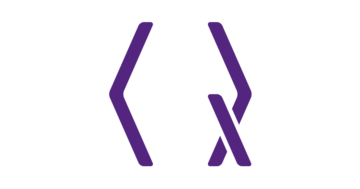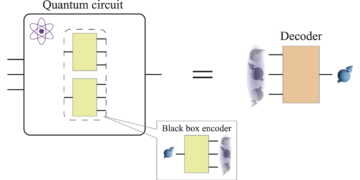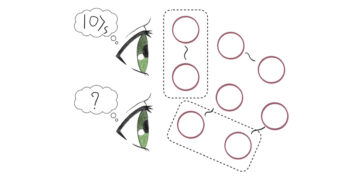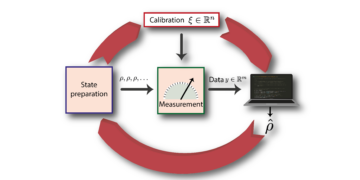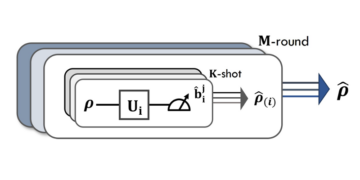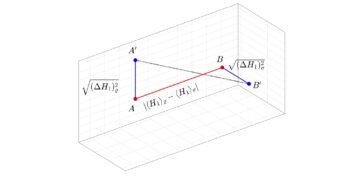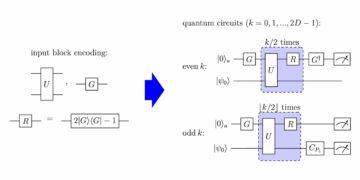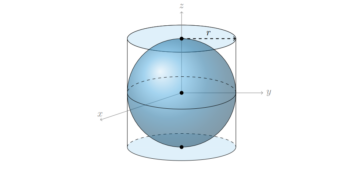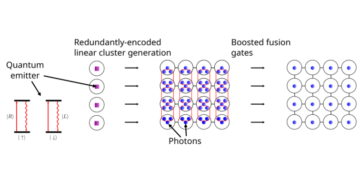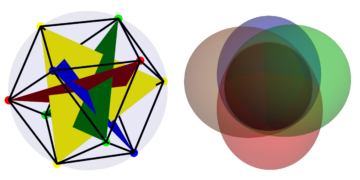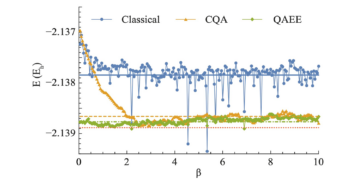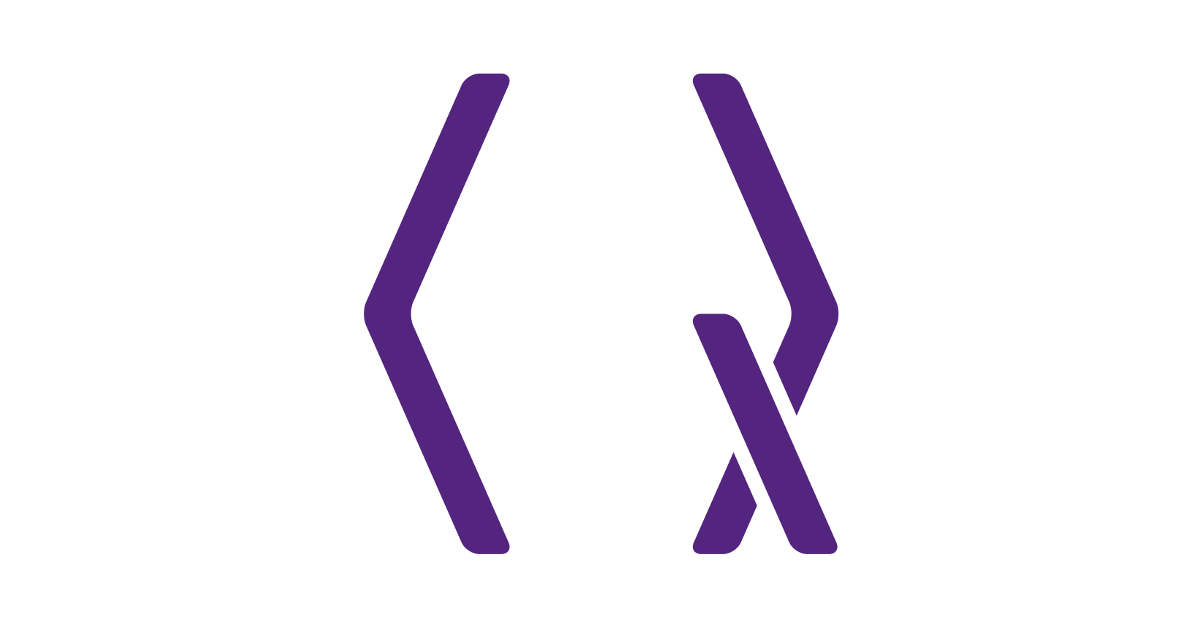
1Institute for Computational and Mathematical Engineering, Stanford University, Stanford, CA 94305
2IBM T.J. Watson Research Center, Yorktown Heights, NY
Find this paper interesting or want to discuss? Scite or leave a comment on SciRate.
Abstract
Qudits with local dimension $d gt 2$ can have unique structure and uses that qubits ($d=2$) cannot. Qudit Pauli operators provide a very useful basis of the space of qudit states and operators. We study the structure of the qudit Pauli group for any, including composite, $d$ in several ways. To cover composite values of $d$, we work with modules over commutative rings, which generalize the notion of vector spaces over fields. For any specified set of commutation relations, we construct a set of qudit Paulis satisfying those relations. We also study the maximum size of sets of Paulis that mutually non-commute and sets that non-commute in pairs. Finally, we give methods to find near minimal generating sets of Pauli subgroups, calculate the sizes of Pauli subgroups, and find bases of logical operators for qudit stabilizer codes. Useful tools in this study are normal forms from linear algebra over commutative rings, including the Smith normal form, alternating Smith normal form, and Howell normal form of matrices. Possible applications of this work include the construction and analysis of qudit stabilizer codes, entanglement assisted codes, parafermion codes, and fermionic Hamiltonian simulation.
► BibTeX data
► References
[1] Andrew D. Greentree, S. G. Schirmer, F. Green, Lloyd C. L. Hollenberg, A. R. Hamilton, and R. G. Clark. “Maximizing the Hilbert space for a finite number of distinguishable quantum states”. Phys. Rev. Lett. 92, 097901 (2004). doi: 10.1103/PhysRevLett.92.097901.
https://doi.org/10.1103/PhysRevLett.92.097901
[2] Markus Grassl, Thomas Beth, and Martin Rötteler. “On optimal quantum codes”. International Journal of Quantum Information 02, 55–64 (2004). doi: 10.1142/S0219749904000079.
https://doi.org/10.1142/S0219749904000079
[3] Suhail Ahmad Rather, Adam Burchardt, Wojciech Bruzda, Grzegorz Rajchel-Mieldzioć, Arul Lakshminarayan, and Karol Życzkowski. “Thirty-six entangled officers of Euler: Quantum solution to a classically impossible problem”. Phys. Rev. Lett. 128, 080507 (2022). doi: 10.1103/PhysRevLett.128.080507.
https://doi.org/10.1103/PhysRevLett.128.080507
[4] Michael A. Nielsen, Michael J. Bremner, Jennifer L. Dodd, Andrew M. Childs, and Christopher M. Dawson. “Universal simulation of Hamiltonian dynamics for quantum systems with finite-dimensional state spaces”. Phys. Rev. A 66, 022317 (2002). doi: 10.1103/PhysRevA.66.022317.
https://doi.org/10.1103/PhysRevA.66.022317
[5] Jonathan E. Moussa. “Quantum circuits for qubit fusion”. Quantum Information & Computation 16, 1113–1124 (2016). doi: 10.26421/QIC16.13-14-3.
https://doi.org/10.26421/QIC16.13-14-3
[6] Alex Bocharov, Martin Roetteler, and Krysta M. Svore. “Factoring with qutrits: Shor’s algorithm on ternary and metaplectic quantum architectures”. Phys. Rev. A 96, 012306 (2017). doi: 10.1103/PhysRevA.96.012306.
https://doi.org/10.1103/PhysRevA.96.012306
[7] Earl T. Campbell, Hussain Anwar, and Dan E. Browne. “Magic-state distillation in all prime dimensions using quantum Reed-Muller codes”. Phys. Rev. X 2, 041021 (2012). doi: 10.1103/PhysRevX.2.041021.
https://doi.org/10.1103/PhysRevX.2.041021
[8] Anirudh Krishna and Jean-Pierre Tillich. “Towards low overhead magic state distillation”. Phys. Rev. Lett. 123, 070507 (2019). doi: 10.1103/PhysRevLett.123.070507.
https://doi.org/10.1103/PhysRevLett.123.070507
[9] Tyler D. Ellison, Yu-An Chen, Arpit Dua, Wilbur Shirley, Nathanan Tantivasadakarn, and Dominic J. Williamson. “Pauli stabilizer models of twisted quantum doubles”. PRX Quantum 3, 010353 (2022). doi: 10.1103/PRXQuantum.3.010353.
https://doi.org/10.1103/PRXQuantum.3.010353
[10] Tyler D. Ellison, Yu-An Chen, Arpit Dua, Wilbur Shirley, Nathanan Tantivasadakarn, and Dominic J. Williamson. “Pauli topological subsystem codes from Abelian anyon theories”. Quantum 7, 1137 (2023). doi: 10.22331/q-2023-10-12-1137.
https://doi.org/10.22331/q-2023-10-12-1137
[11] Noah Goss, Alexis Morvan, Brian Marinelli, Bradley K. Mitchell, Long B. Nguyen, Ravi K. Naik, Larry Chen, Christian Jünger, John Mark Kreikebaum, David I. Santiago, Joel J. Wallman, and Irfan Siddiqi. “High-fidelity qutrit entangling gates for superconducting circuits”. Nature Communications 13, 7481 (2022). doi: 10.1038/s41467-022-34851-z.
https://doi.org/10.1038/s41467-022-34851-z
[12] Kai Luo, Wenhui Huang, Ziyu Tao, Libo Zhang, Yuxuan Zhou, Ji Chu, Wuxin Liu, Biying Wang, Jiangyu Cui, Song Liu, Fei Yan, Man-Hong Yung, Yuanzhen Chen, Tongxing Yan, and Dapeng Yu. “Experimental realization of two qutrits gate with tunable coupling in superconducting circuits”. Phys. Rev. Lett. 130, 030603 (2023). doi: 10.1103/PhysRevLett.130.030603.
https://doi.org/10.1103/PhysRevLett.130.030603
[13] Peter B R Nisbet-Jones, Jerome Dilley, Annemarie Holleczek, Oliver Barter, and Axel Kuhn. “Photonic qubits, qutrits and ququads accurately prepared and delivered on demand”. New Journal of Physics 15, 053007 (2013). doi: 10.1088/1367-2630/15/5/053007.
https://doi.org/10.1088/1367-2630/15/5/053007
[14] Michael Kues, Christian Reimer, Piotr Roztocki, Luis Romero Cortés, Stefania Sciara, Benjamin Wetzel, Yanbing Zhang, Alfonso Cino, Sai T. Chu, Brent E. Little, David J. Moss, Lucia Caspani, José Azaña, and Roberto Morandotti. “On-chip generation of high-dimensional entangled quantum states and their coherent control”. Nature 546, 622–626 (2017). doi: 10.1038/nature22986.
https://doi.org/10.1038/nature22986
[15] Laurin E. Fischer, Alessandro Chiesa, Francesco Tacchino, Daniel J. Egger, Stefano Carretta, and Ivano Tavernelli. “Universal qudit gate synthesis for transmons”. PRX Quantum 4, 030327 (2023). doi: 10.1103/PRXQuantum.4.030327.
https://doi.org/10.1103/PRXQuantum.4.030327
[16] Shuang Wang, Zhen-Qiang Yin, H F Chau, Wei Chen, Chao Wang, Guang-Can Guo, and Zheng-Fu Han. “Proof-of-principle experimental realization of a qubit-like qudit-based quantum key distribution scheme”. Quantum Science and Technology 3, 025006 (2018). doi: 10.1088/2058-9565/aaace4.
https://doi.org/10.1088/2058-9565/aaace4
[17] Eufemio Moreno-Pineda, Clément Godfrin, Franck Balestro, Wolfgang Wernsdorfer, and Mario Ruben. “Molecular spin qudits for quantum algorithms”. Chem. Soc. Rev. 47, 501–513 (2018). doi: 10.1039/C5CS00933B.
https://doi.org/10.1039/C5CS00933B
[18] Mario Chizzini, Luca Crippa, Luca Zaccardi, Emilio Macaluso, Stefano Carretta, Alessandro Chiesa, and Paolo Santini. “Quantum error correction with molecular spin qudits”. Phys. Chem. Chem. Phys. 24, 20030–20039 (2022). doi: 10.1039/D2CP01228F.
https://doi.org/10.1039/D2CP01228F
[19] Daniel Gottesman. “Stabilizer codes and quantum error correction”. PhD thesis. California Institute of Technology. (1997). doi: 10.7907/rzr7-dt72.
https://doi.org/10.7907/rzr7-dt72
[20] Daniel Gottesman. “Fault-tolerant quantum computation with higher-dimensional systems”. In C.P. Williams, editor, Quantum Computing and Quantum Communications, QCQC 1998. Volume 1509, pages 302–313. Springer Berlin Heidelberg (1999). doi: 10.1007/3-540-49208-9_27.
https://doi.org/10.1007/3-540-49208-9_27
[21] Utkan Güngördü, Rabindra Nepal, and Alexey A. Kovalev. “Parafermion stabilizer codes”. Phys. Rev. A 90, 042326 (2014). doi: 10.1103/PhysRevA.90.042326.
https://doi.org/10.1103/PhysRevA.90.042326
[22] Rahul Sarkar and Theodore J Yoder. “A graph-based formalism for surface codes and twists” (2021). doi: 10.48550/arXiv.2101.09349.
https://doi.org/10.48550/arXiv.2101.09349
[23] Lane G. Gunderman. “Transforming collections of Pauli operators into equivalent collections of Pauli operators over minimal registers”. Phys. Rev. A 107, 062416 (2023). doi: 10.1103/PhysRevA.107.062416.
https://doi.org/10.1103/PhysRevA.107.062416
[24] Greg Kuperberg. “Kasteleyn cokernels.”. The Electronic Journal of Combinatorics [electronic only] 9, R29, 30p. (2002). doi: 10.37236/1645.
https://doi.org/10.37236/1645
[25] Mark M. Wilde. “Logical operators of quantum codes”. Phys. Rev. A 79, 062322 (2009). doi: 10.1103/PhysRevA.79.062322.
https://doi.org/10.1103/PhysRevA.79.062322
[26] Pascual Jordan and Eugene Paul Wigner. “Über das Paulische Äquivalenzverbot”. Zeitschrift für Physik 47, 631–651 (1928). doi: 10.1007/BF01331938.
https://doi.org/10.1007/BF01331938
[27] Sergey B. Bravyi and Alexei Yu. Kitaev. “Fermionic quantum computation”. Annals of Physics 298, 210–226 (2002). doi: 10.1006/aphy.2002.6254.
https://doi.org/10.1006/aphy.2002.6254
[28] F Verstraete and J. Ignacio Cirac. “Mapping local Hamiltonians of fermions to local Hamiltonians of spins”. Journal of Statistical Mechanics: Theory and Experiment 2005, P09012 (2005). doi: 10.1088/1742-5468/2005/09/P09012.
https://doi.org/10.1088/1742-5468/2005/09/P09012
[29] Vojtěch Havlíček, Matthias Troyer, and James D. Whitfield. “Operator locality in the quantum simulation of fermionic models”. Phys. Rev. A 95, 032332 (2017). doi: 10.1103/PhysRevA.95.032332.
https://doi.org/10.1103/PhysRevA.95.032332
[30] Zhang Jiang, Amir Kalev, Wojciech Mruczkiewicz, and Hartmut Neven. “Optimal fermion-to-qubit mapping via ternary trees with applications to reduced quantum states learning”. Quantum 4, 276 (2020). doi: 10.22331/q-2020-06-04-276.
https://doi.org/10.22331/q-2020-06-04-276
[31] Sergey Bravyi, Jay M. Gambetta, Antonio Mezzacapo, and Kristan Temme. “Tapering off qubits to simulate fermionic Hamiltonians” (2017). doi: 10.48550/arXiv.1701.08213.
https://doi.org/10.48550/arXiv.1701.08213
[32] Kanav Setia, Sergey Bravyi, Antonio Mezzacapo, and James D. Whitfield. “Superfast encodings for fermionic quantum simulation”. Phys. Rev. Res. 1, 033033 (2019). doi: 10.1103/PhysRevResearch.1.033033.
https://doi.org/10.1103/PhysRevResearch.1.033033
[33] Kanav Setia, Richard Chen, Julia E. Rice, Antonio Mezzacapo, Marco Pistoia, and James D. Whitfield. “Reducing qubit requirements for quantum simulations using molecular point group symmetries”. Journal of Chemical Theory and Computation 16, 6091–6097 (2020). doi: 10.1021/acs.jctc.0c00113.
https://doi.org/10.1021/acs.jctc.0c00113
[34] Jacob T. Seeley, Martin J. Richard, and Peter J. Love. “The Bravyi-Kitaev transformation for quantum computation of electronic structure”. The Journal of Chemical Physics 137, 224109 (2012). doi: 10.1063/1.4768229.
https://doi.org/10.1063/1.4768229
[35] Mark Steudtner and Stephanie Wehner. “Fermion-to-qubit mappings with varying resource requirements for quantum simulation”. New Journal of Physics 20, 063010 (2018). doi: 10.1088/1367-2630/aac54f.
https://doi.org/10.1088/1367-2630/aac54f
[36] Todd Brun, Igor Devetak, and Min-Hsiu Hsieh. “Correcting quantum errors with entanglement”. Science 314, 436–439 (2006). doi: 10.1126/science.1131563.
https://doi.org/10.1126/science.1131563
[37] Min-Hsiu Hsieh. “Entanglement-assisted coding theory”. PhD thesis. University of Southern California. (2008). url: https://www.proquest.com/dissertations-theses/entanglement-assisted-coding-theory/docview/304492442/se-2.
https://www.proquest.com/dissertations-theses/entanglement-assisted-coding-theory/docview/304492442/se-2
[38] Mark M. Wilde and Todd A. Brun. “Optimal entanglement formulas for entanglement-assisted quantum coding”. Phys. Rev. A 77, 064302 (2008). doi: 10.1103/PhysRevA.77.064302.
https://doi.org/10.1103/PhysRevA.77.064302
[39] Monireh Houshmand, Saied Hosseini-Khayat, and Mark M. Wilde. “Minimal-memory, noncatastrophic, polynomial-depth quantum convolutional encoders”. IEEE Transactions on Information Theory 59, 1198–1210 (2013). doi: 10.1109/TIT.2012.2220520.
https://doi.org/10.1109/TIT.2012.2220520
[40] A Yu Kitaev. “Unpaired Majorana fermions in quantum wires”. Physics-Uspekhi 44, 131 (2001). doi: 10.1070/1063-7869/44/10S/S29.
https://doi.org/10.1070/1063-7869/44/10S/S29
[41] Sagar Vijay and Liang Fu. “Quantum error correction for complex and Majorana fermion qubits” (2017). doi: 10.48550/arXiv.1703.00459.
https://doi.org/10.48550/arXiv.1703.00459
[42] Vlad Gheorghiu. “Standard form of qudit stabilizer groups”. Physics Letters A 378, 505–509 (2014). doi: 10.1016/j.physleta.2013.12.009.
https://doi.org/10.1016/j.physleta.2013.12.009
[43] Scott Aaronson and Daniel Gottesman. “Improved simulation of stabilizer circuits”. Phys. Rev. A 70, 052328 (2004). doi: 10.1103/PhysRevA.70.052328.
https://doi.org/10.1103/PhysRevA.70.052328
[44] Lane G. Gunderman. “Stabilizer codes with exotic local-dimensions”. Quantum 8, 1249 (2024). doi: 10.22331/q-2024-02-12-1249.
https://doi.org/10.22331/q-2024-02-12-1249
[45] Zihan Lei. “Qudit surface codes and hypermap codes”. Quantum Information Processing 22, 297 (2023). doi: 10.1007/s11128-023-04060-8.
https://doi.org/10.1007/s11128-023-04060-8
[46] Serge Lang. “Algebra”. Volume 211 of Graduate Texts in Mathematics, pages xvi+914. Springer-Verlag, New York. (2002). Third edition. doi: 10.1007/978-1-4613-0041-0.
https://doi.org/10.1007/978-1-4613-0041-0
[47] William C. Brown. “Matrices over commutative rings”. Volume 169 of Monographs and textbooks in pure and applied mathematics. Marcel Dekker, Inc., New York. (1993).
[48] T. J. Kaczynski. “Another proof of Wedderburn’s theorem”. The American Mathematical Monthly 71, 652–653 (1964). doi: 10.2307/2312328.
https://doi.org/10.2307/2312328
[49] Robert B. Ash. “Basic abstract algebra: for graduate students and advanced undergraduates”. Dover Publications Inc., New York. (2013).
[50] Thomas W. Hungerford. “Algebra”. Volume 73 of Graduate Texts in Mathematics. Springer-Verlag, New York. (1974). First edition. doi: 10.1007/978-1-4612-6101-8.
https://doi.org/10.1007/978-1-4612-6101-8
[51] Tsit-Yuen Lam. “Lectures on modules and rings”. Volume 189 of Graduate Texts in Mathematics. Springer-Verlag, New York. (1999). First edition. doi: 10.1007/978-1-4612-0525-8.
https://doi.org/10.1007/978-1-4612-0525-8
[52] Rahul Sarkar. “Size of minimal generating set of a module generated by columns of a diagonal matrix with extra structure”. MathOverflow. url: https://mathoverflow.net/q/431397 (version: 2022-09-28).
https://mathoverflow.net/q/431397
[53] Arne Storjohann. “Algorithms for matrix canonical forms”. PhD thesis. ETH Zurich. Zürich (2000). doi: 10.3929/ethz-a-004141007.
https://doi.org/10.3929/ethz-a-004141007
[54] John A. Howell. “Spans in the module $(mathbb{Z}_m)^s$”. Linear and Multilinear Algebra 19, 67–77 (1986). doi: 10.1080/03081088608817705.
https://doi.org/10.1080/03081088608817705
[55] Mark A. Webster, Benjamin J. Brown, and Stephen D. Bartlett. “The XP stabiliser formalism: a generalisation of the Pauli stabiliser formalism with arbitrary phases”. Quantum 6, 815 (2022). doi: 10.22331/q-2022-09-22-815.
https://doi.org/10.22331/q-2022-09-22-815
[56] Claus Fieker and Tommy Hofmann. “Computing in quotients of rings of integers”. LMS Journal of Computation and Mathematics 17, 349–365 (2014). doi: 10.1112/S1461157014000291.
https://doi.org/10.1112/S1461157014000291
[57] Rahul Sarkar and Ewout van den Berg. “On sets of maximally commuting and anticommuting Pauli operators”. Research in the Mathematical Sciences 8, 14 (2021). doi: 10.1007/s40687-020-00244-1.
https://doi.org/10.1007/s40687-020-00244-1
[58] Xavier Bonet-Monroig, Ryan Babbush, and Thomas E. O’Brien. “Nearly optimal measurement scheduling for partial tomography of quantum states”. Phys. Rev. X 10, 031064 (2020). doi: 10.1103/PhysRevX.10.031064.
https://doi.org/10.1103/PhysRevX.10.031064
[59] Pavel Hrubeš. “On families of anticommuting matrices”. Linear Algebra and its Applications 493, 494–507 (2016). doi: 10.1016/j.laa.2015.12.015.
https://doi.org/10.1016/j.laa.2015.12.015
[60] Patrick Solé and Michel Planat. “Extreme values of the Dedekind $psi$ function”. Journal of Combinatorics and Number Theory 3, 33–38 (2011). url: https://www.proquest.com/scholarly-journals/extreme-values-dedekind-psi-function/docview/1728715084/se-2.
https://www.proquest.com/scholarly-journals/extreme-values-dedekind-psi-function/docview/1728715084/se-2
[61] Michel Planat and Metod Saniga. “On the Pauli graphs on N-qudits”. Quantum Information & Computation 8, 127–146 (2008). doi: 10.26421/qic8.1-2-9.
https://doi.org/10.26421/qic8.1-2-9
[62] Michel Planat. “Pauli graphs when the Hilbert space dimension contains a square: Why the Dedekind psi function?”. Journal of Physics A: Mathematical and Theoretical 44, 045301 (2011). doi: 10.1088/1751-8113/44/4/045301.
https://doi.org/10.1088/1751-8113/44/4/045301
[63] Hans Havlicek and Metod Saniga. “Projective ring line of a specific qudit”. Journal of Physics A: Mathematical and Theoretical 40, F943 (2007). doi: 10.1088/1751-8113/40/43/F03.
https://doi.org/10.1088/1751-8113/40/43/F03
[64] Michel Planat and Anne-Céline Baboin. “Qudits of composite dimension, mutually unbiased bases and projective ring geometry”. Journal of Physics A: Mathematical and Theoretical 40, F1005 (2007). doi: 10.1088/1751-8113/40/46/F04.
https://doi.org/10.1088/1751-8113/40/46/F04
[65] Leonard Eugene Dickson. “History of the theory of numbers”. Volume 1. Carnegie Institution of Washington. (1919). doi: https://doi.org/10.5962/t.174869.
https://doi.org/10.5962/t.174869
[66] Jeremy Rickard. “Condition for equality of modules generated by columns of matrices”. MathOverflow. url: https://mathoverflow.net/q/437972 (version: 2023-01-06).
https://mathoverflow.net/q/437972
[67] Robert Koenig and John A. Smolin. “How to efficiently select an arbitrary Clifford group element”. Journal of Mathematical Physics 55, 122202 (2014). doi: 10.1063/1.4903507.
https://doi.org/10.1063/1.4903507
[68] Sergey Bravyi and Dmitri Maslov. “Hadamard-free circuits expose the structure of the Clifford group”. IEEE Transactions on Information Theory 67, 4546–4563 (2021). doi: 10.1109/TIT.2021.3081415.
https://doi.org/10.1109/TIT.2021.3081415
[69] Alexander Miller and Victor Reiner. “Differential posets and Smith normal forms”. Order 26, 197–228 (2009). doi: 10.1007/s11083-009-9114-z.
https://doi.org/10.1007/s11083-009-9114-z
[70] Irving Kaplansky. “Elementary divisors and modules”. Transactions of the American Mathematical Society 66, 464–491 (1949). doi: 10.2307/1990591.
https://doi.org/10.2307/1990591
[71] Dan D. Anderson, Michael Axtell, Sylvia J. Forman, and Joe Stickles. “When are associates unit multiples?”. Rocky Mountain Journal of Mathematics 34, 811–828 (2004). doi: 10.1216/rmjm/1181069828.
https://doi.org/10.1216/rmjm/1181069828
[72] Richard P. Stanley. “Smith normal form in combinatorics”. Journal of Combinatorial Theory, Series A 144, 476–495 (2016). doi: 10.1016/j.jcta.2016.06.013.
https://doi.org/10.1016/j.jcta.2016.06.013
Cited by
[1] Lane G. Gunderman, “Stabilizer Codes with Exotic Local-dimensions”, Quantum 8, 1249 (2024).
[2] Ben DalFavero, Rahul Sarkar, Daan Camps, Nicolas Sawaya, and Ryan LaRose, “$k$-commutativity and measurement reduction for expectation values”, arXiv:2312.11840, (2023).
[3] Lane G. Gunderman, Andrew Jena, and Luca Dellantonio, “Minimal qubit representations of Hamiltonians via conserved charges”, Physical Review A 109 2, 022618 (2024).
The above citations are from SAO/NASA ADS (last updated successfully 2024-04-04 12:43:26). The list may be incomplete as not all publishers provide suitable and complete citation data.
Could not fetch Crossref cited-by data during last attempt 2024-04-04 12:43:24: Could not fetch cited-by data for 10.22331/q-2024-04-04-1307 from Crossref. This is normal if the DOI was registered recently.
This Paper is published in Quantum under the Creative Commons Attribution 4.0 International (CC BY 4.0) license. Copyright remains with the original copyright holders such as the authors or their institutions.
- SEO Powered Content & PR Distribution. Get Amplified Today.
- PlatoData.Network Vertical Generative Ai. Empower Yourself. Access Here.
- PlatoAiStream. Web3 Intelligence. Knowledge Amplified. Access Here.
- PlatoESG. Carbon, CleanTech, Energy, Environment, Solar, Waste Management. Access Here.
- PlatoHealth. Biotech and Clinical Trials Intelligence. Access Here.
- Source: https://quantum-journal.org/papers/q-2024-04-04-1307/
- :is
- :not
- ][p
- 02
- 06
- 1
- 10
- 107
- 11
- 12
- 13
- 130
- 14
- 15%
- 16
- 17
- 19
- 1949
- 1998
- 1999
- 2%
- 20
- 2000
- 2001
- 2005
- 2006
- 2007
- 2008
- 2009
- 2011
- 2012
- 2013
- 2014
- 2015
- 2016
- 2017
- 2018
- 2019
- 2020
- 2021
- 2022
- 2023
- 2024
- 21
- 211
- 22
- 23
- 24
- 25
- 26
- 27
- 28
- 29
- 30
- 31
- 32
- 33
- 34
- 35%
- 36
- 378
- 39
- 4
- 40
- 41
- 42
- 45
- 46
- 48
- 49
- 5
- 50
- 51
- 52
- 54
- 55
- 58
- 6
- 60
- 62
- 65
- 66
- 67
- 7
- 70
- 72
- 73
- 77
- 8
- 9
- 90
- a
- above
- ABSTRACT
- access
- accurately
- Adam
- advanced
- affiliations
- alex
- Alexander
- algebra
- algorithm
- algorithms
- All
- also
- American
- an
- analysis
- and
- anderson
- Andrew
- any
- applications
- applied
- apr
- arbitrary
- architectures
- ARE
- arpit
- AS
- assisted
- associates
- attempt
- author
- authors
- b
- basis
- BE
- ben
- Benjamin
- berlin
- beth
- Break
- brent
- Brian
- brown
- by
- CA
- calculate
- california
- campbell
- CAN
- cannot
- Center
- charges
- chemical
- chen
- chiesa
- christian
- Christopher
- circuits
- Claus
- Codes
- Coding
- COHERENT
- collections
- Columns
- comment
- Commons
- Communications
- commuting
- complete
- complex
- computation
- computational
- computing
- construct
- construction
- contains
- control
- copyright
- could
- cover
- dan
- Daniel
- data
- David
- delivered
- Demand
- Den
- Dimension
- dimensions
- discuss
- distribution
- divisors
- dominic
- doubles
- during
- dynamics
- e
- edition
- editor
- efficiently
- Electronic
- element
- Ellison
- Engineering
- entanglement
- equality
- Equivalent
- error
- Errors
- ETH
- ETH Zurich
- Ether (ETH)
- eugene
- Exotic
- expectation
- experiment
- experimental
- expose
- extra
- families
- fei
- Fields
- Finally
- Find
- finite
- First
- For
- form
- forms
- formulas
- from
- fu
- function
- fusion
- gate
- Gates
- generated
- generating
- generation
- geometry
- Give
- graduate
- graphs
- Green
- greg
- Group
- Group’s
- Hamilton
- hans
- harvard
- Have
- heights
- holders
- howell
- HTTPS
- huang
- i
- IEEE
- if
- impossible
- in
- Inc.
- include
- Including
- information
- Institute
- Institution
- institutions
- integers
- interesting
- International
- into
- ITS
- jacob
- james
- JavaScript
- Jennifer
- jeremy
- jerome
- joe
- John
- jonathan
- Jordan
- journal
- julia
- Key
- Lam
- Lane
- LANG
- Last
- learning
- Leave
- leonard
- License
- Line
- linear
- List
- little
- local
- logical
- Long
- love
- Low
- magic
- mapping
- Marco
- Marinelli
- Mario
- mark
- Martin
- mathematical
- mathematics
- Matrix
- matthias
- maximum
- May..
- measurement
- mechanics
- methods
- Michael
- Miller
- minimal
- models
- module
- Modules
- molecular
- Month
- monthly
- moss
- Mountain
- multiples
- mutually
- Nature
- Near
- New
- New York
- Nguyen
- Nicolas
- Noah
- normal
- Notion
- number
- numbers
- of
- off
- officers
- oliver
- on
- only
- open
- operators
- optimal
- or
- order
- original
- over
- overhead
- pages
- pairs
- Paolo
- Paper
- partial
- patrick
- Paul
- Peter
- phases
- phd
- Physics
- plato
- Plato Data Intelligence
- PlatoData
- Point
- possible
- prepared
- Prime
- Problem
- processing
- proof
- provide
- publications
- published
- publisher
- publishers
- pure
- Quantum
- quantum algorithms
- quantum computing
- quantum error correction
- quantum information
- quantum systems
- Qubit
- qubits
- R
- rather
- realization
- recently
- Reduced
- reduction
- references
- registered
- registers
- relations
- remains
- representations
- Requirements
- research
- resource
- review
- Rice
- Richard
- Ring
- ROBERT
- roberto
- rocky
- Ryan
- s
- scheduling
- scheme
- Science
- Science and Technology
- SCIENCES
- scott
- scott aaronson
- select
- Series
- Series A
- set
- Sets
- several
- simulate
- simulation
- simulations
- Size
- sizes
- smith
- Society
- solution
- song
- Southern
- Space
- spaces
- specific
- specified
- Spin
- spins
- square
- stanford
- Stanford university
- stanley
- State
- States
- statistical
- Stephen
- structure
- Students
- Study
- Successfully
- such
- suitable
- Surface
- synthesis
- Systems
- T
- Technology
- textbooks
- that
- The
- their
- theorem
- theoretical
- theory
- thesis
- Third
- this
- thomas
- those
- Title
- to
- todd
- tomography
- tools
- Transactions
- Transformation
- Trees
- twisted
- twists
- two
- tyler
- unbiased
- under
- unique
- unit
- university
- University of Southern California
- updated
- URL
- useful
- uses
- using
- Values
- van
- varying
- vector
- version
- very
- via
- vlad
- volume
- W
- wang
- want
- was
- washington
- Watson
- ways
- we
- when
- which
- why
- william
- Williams
- with
- Work
- X
- xp
- year
- york
- zephyrnet
- zhang
- Zurich

